Today, SevenPonds speaks with Lea Rose, a clinical counselor and psychotherapist with over two decades of experience. She is the founder of the Living and Dying Well Counselling Centre in Melbourne, Australia, and the author of the book “Let’s Talk About It!: Finding Peace with Death and Dying in Everyday Life.”
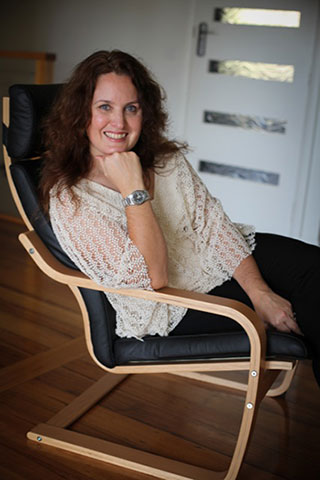
Lea Rose, BA. Dip ed. Adv. Dip Couns. MACA CV
(Credit: learose.com.au)
Juniper: Your two-decade career as a clinical counselor is reflected in the broad range of issues addressed in your practice, and at the Living and Dying Well Counselling Centre. Did your interest in these topics occur around the same time, or evolve over the course of your career?
Lea: At the age of about 23, I was offered a job as an art therapist in the oncology department at the Royal Children’s Hospital in Melbourne. I was completely naive to the fact that I was going to be working with so much death and grief. In those days, the success rate for leukemia treatment was about 11 percent (today it’s around 90 percent). I was working with dying children for about three years, helping them cope with their treatments. At that time there were no grief counseling courses or anything of that sort were available to me. I learned by being there.
Juniper: What have you learned from the dying children you have worked with?
Lea: When Dr. Patch Adams — the “clown doctor” from America — came to work with me and a four-year-old girl, he taught me how to connect with the person inside the illness, and not see the illness at all anymore. That’s when my career changed: From that moment, I was working with people, not illnesses. I don’t react – if someone comes in full of cancer and they’re looking terrible, I look at what’s happening with the person, not their body. I think the person gets lost in their symptoms if the people around them are so traumatized by the situation, caught up in their own grief, guilt, or fear, that they don’t know how to connect to the patient’s personhood. We need to learn how to look inside and ask, how are you doing in there?
Juniper: Do you think that the pathologization of death — this focus on the symptoms — is perhaps a systemic, cultural coping mechanism to avoid confronting the fear of human mortality? In your book “Let’s Talk About It,” you address the need to shift cultural attitudes toward dying and grief. What, in your opinion, could shift in the medical system in terms of support for dying people and their families? How could things be different?
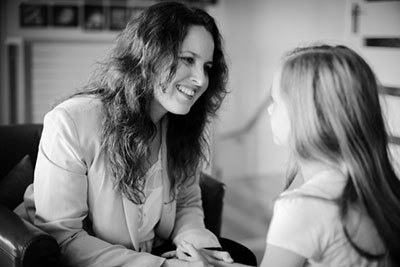
Credit: learose.com.au
Lea: Things are getting worse in Australia. People are getting more disconnected and they are hoping for euthanasia so they don’t have to deal with death at all. The debate around euthanasia is getting more negative. I’m not against it, but I’m against how it’s coming in, without death education in the middle. For example, my mother just died, and my father, at age 75, says euthanasia should be legal regardless of your physical symptoms, so that you don’t have to get old, think of illness, or face death. I have a feeling that if euthanasia is legalized in Australia, that’s what would happen. It might settle down after a time, but I think it will really compromise a person’s ability to die well. We’re already not talking about death anyway, and now there’s an easy way out of not accepting it. I’ve seen people in America, not even in the first stages of dying, choosing euthanasia. Just because you’ve got a life-threatening illness, that doesn’t mean you’re dying. There’s a real difference.
In my experience, people are terrified of death, except the people with terminal illnesses. They definitely are afraid when they first come to see me, and then it changes. We work through the stages of death of the physical body, and then the client can see, well gosh, so that’s what happens. There is no death education, so of course people are afraid.
I want to see death education in schools. If we start at the bottom, it will be a lot easier. It’s harder to teach someone in their 70s about death — it’s easier to learn when you’re a lot younger. My 13-year-old daughter recently did a public lecture for her school on why death education is important, and the teachers couldn’t cope with the reality of her speech. The kids were also basically lost, as if these ideas had come totally out of left field, even though many of them had lost grandparents. They’ve had sex education, drug and alcohol education, pornography and cyber-bullying education…everything but grief, loss and death education!
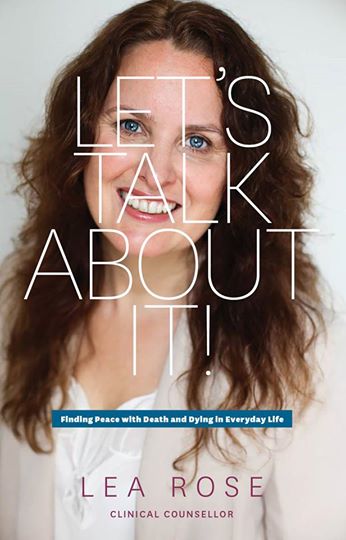
Credit: learose.com.au
There’s a movement that started about three or four years ago when I published my book, but it’s gotten lost in the euthanasia debate. Mainly, there are three of us focusing on dying well: the Death Walker, the Death Talker, and the Death Educator (me). Barely anyone knows our work, to the point where actors can get up and talk about why euthanasia needs to be legalized, but the people who have been doing this work for years don’t get radio time, television or magazine coverage. It’s also about money. The nursing homes in Australia don’t want euthanasia legalized because their facilities would be empty. The drug companies making products for euthanasia will also have a stake in this. The debate isn’t about human existence – it’s about business. Until the balance of public death education comes in, how will people make informed choices about what dying well means?
I know a 40-year-old woman with five young children who has a body full of cancer. A year and a half ago, she was given six months to live. She wishes to undergo treatments that will keep her alive as long as possible so that her children will have a mother for more of their childhood. Everyone in her world was in denial about her condition until she started blogging about how she will die of cancer, and what she needs is people to help support her children. If you ask her if she’s afraid of dying, the answer is no — she’s afraid of leaving her children.
So the euthanasia question is about age, too. I have people in their 70s who have lost their 50-year partners who just want to die now, so my challenge with them is to help them find purpose in life. I ask them what haven’t they done in their lifetime that they want to. What can they do to give back? And usually they find something that gives them a new lease on life.
Juniper: Would you say that “dying well” means to die as a fully alive human being?
Lea: Yes, I love that! Exactly. The woman who has the children is like that: fully engaged, giving everything she can, very close to her husband, living life, enjoying life while she’s dying. That’s what I’d like to see everywhere. Of course there are people being kept alive on life support longer than they should be for anyone’s benefit including their own, but that’s actually a very small percentage of people, especially in populations with cancer.
Juniper: Is there room for euthanasia in dying well? Do people who choose to end their lives to avoid suffering miss out on receiving the gift of care and gentleness toward the end of their life?

Lea Rose BA. Dip ed. Adv. Dip Couns. MACA CV
(Credit: learose.com.au)
Lea: I’ve seen thousands of people die, and I’ve never seen anyone die badly who knew how to die with the support of their loved ones. There are stages of transition, but there isn’t necessarily suffering at the end of someone’s life. It’s like birth: we can all choose to have Cesareans now and not feel anything, but the natural process has its own rewards and purpose. Perhaps euthanasia has a place in dying well when someone’s in stage 4 cancer, but if someone’s transitioning well, then there’s no need. I think in those instances, if euthanasia was legalized, hospitals would strongly encourage people to make that choice under the auspice of reducing suffering, because it would save money.
When someone is going through the final phases of their lives, that is often the most intimate time they will ever have with their family. A year ago I helped a 32-year-old woman who was dying of cancer be supported by her family. The family wasn’t in denial about what was happening, but she was. The main issue was her dignity. She didn’t want anyone to see her deteriorating. She wasn’t afraid of death, but she didn’t want to receive care such as being washed, taken to the toilet, and all the things that have to happen when someone is dying.
So, I told her a story about when I gave birth. I was sitting in my own feces and urine; there was blood everywhere; I was naked in a room full of people — it was quite disgusting, honestly. But you don’t see it like that, because you’re about to give birth to a baby, so you go through that natural transition. The whole time, my mother was there with me. So I told that woman, “Your mother had you out of her own body. When you were a little baby, you would have vomited and had diarrhea, and all those things. Do you think she hasn’t seen it all? By letting your mother take care of you, you’re letting her love you. The greatest gift you can give her is to let her care for you, because when you’re not here, she will remember the times that she bathed, carried, and held you.”
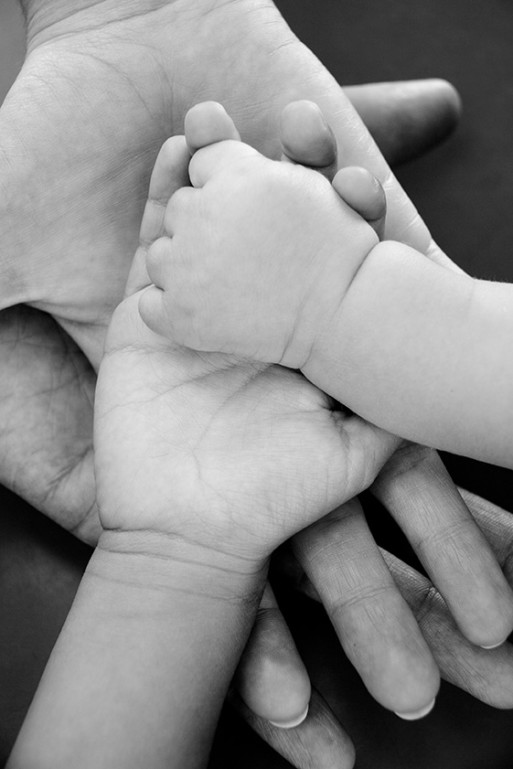
Credit: learose.com.au
That was the shifting point, and after that, that’s what happened. She died at home, with her mother, father, sister and other family present, and her mother is doing well now because she had that time with her daughter. That time would have been lost if euthanasia had come in, because two weeks before that young woman died, she might have said absolutely, yes, I want it. Things were getting tough because she was now incontinent, and it was very real for her then that she was dying. The two weeks that it took her to die well had a transformative effect on the entire family.
When people transition with support, not only do they receive an incredible amount of care and love, but it helps their loved ones with their grieving process. When my own mother had a stroke, I looked after her for three months; my sister barely visited. My mother couldn’t read, write, talk or sit upright.
It’s been six months since my mother died, and those three months of caring for her carry me now. My daughter and I slept in my mother’s room, held her hand, did everything we could for her, and that is what makes our grief bearable. My sister immediately went on antidepressants because she lost that ability to be intimate with my mother, and lost that connection.
Denial plays a big factor in the grief of survivors. When someone is physically declining, there’s this thought that if we don’t have to see it, our grief will be less, or they will get better and then we’ll come visit. But it doesn’t work like that. The avoidance makes the grief worse, and this is why euthanasia needs to come into public awareness alongside death education. I wrote my book so that people could use it to help themselves or someone else care for a dying person instead of avoiding the situation and feeling guilty about the lost opportunity after.
Dying well also requires that family and caregivers, including the medical community, understand the stages of dying. For example, giving someone intravenous feeding while they are trying to die is totally unnecessary. They’re not starving — the body is trying to dry out. It’s part of the process. In pediatric wards, no one wants to tell the family that a child doesn’t need to be fed anymore because they’re dying. This level of denial is reflected in my book. I wanted the phrase “understanding the physical stages of dying” on the front cover, but my publisher really resisted it. However, this is what people really need and want to understand. This is how far we are from where we need to be.
Juniper: SevenPonds recently published an article on the need to educate parents, caregivers, and people who work with children regarding how to facilitate a child through their grief process. One can reasonably hypothesize that the adults will also learn something through this process. Can you speak to this?
Lea: Giving children death education is the way to go, yes. When someone walks into my office and they’re already full of cancer, they can’t deal with death education then. It’s like sex education: It’s in the back of your mind before you’re having sex, and you know about STIs, pregnancy, and the rest. You have an understanding of cause and effect, and what will happen. You may not understand sex because you haven’t experienced it yet, but when the time comes, that education comes through as well. Death education is no different. If you have that education and you’re dealing with a family member or friend who’s got someone who’s dying, you already have this information. It blows my mind that doctors don’t receive death education — maybe one hour to one week of their training. Yet oncologists often spend all day everyday telling people they’re dying.
I think people are more afraid of their grief than the suffering of the dying. It’s all mixed up and needs to be separated out a bit. What people are saying is that they don’t want their loved one to suffer, but actually they don’t want to see death because they don’t want to grieve. They think that if they avoid the hospitals, or the person looks lovely, and then gets euthanized in a nice place then their grief will be lessened, but it doesn’t work like that. Their grief is just as deep or it’s worse, because the shock is greater, because they haven’t seen their loved one go through the stages of death.
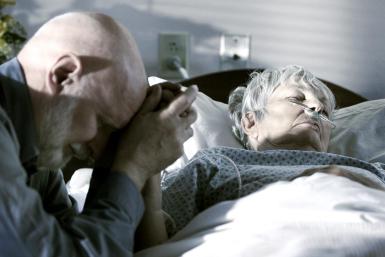
Credit: dying.about.com
Dying well also requires that family and caregivers, including the medical community, understand the stages of dying. For example, giving someone intravenous feeding while they are trying to die is totally unnecessary; they’re not being starved — the body is trying to dry out. It’s part of the process. In pediatric wards, no one wants to tell the family that a child doesn’t need to be fed anymore because they’re dying. This level of denial is reflected in my own book; I wanted the phrase “understanding the physical stages of dying” on the front cover, but my publisher really resisted it. However, this is what people really need and want to understand. This is how far we are from where we need to be.
Juniper: Thanks for your insights, Lea, and for speaking with us today.
Lea Rose: You’re welcome.

 What is Public Death Education? An Interview with Lea Rose
What is Public Death Education? An Interview with Lea Rose


 First the Wealth Gap, Now the U.S. Has a Growing Health Gap
First the Wealth Gap, Now the U.S. Has a Growing Health Gap

 Our Annual Seven Holiday Gifts for Someone Who Is Grieving, 2024 Edition
Our Annual Seven Holiday Gifts for Someone Who Is Grieving, 2024 Edition














